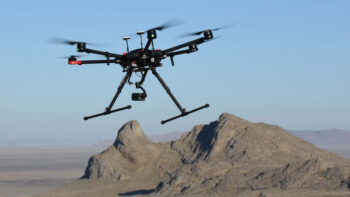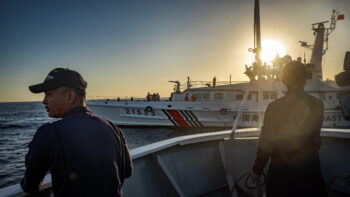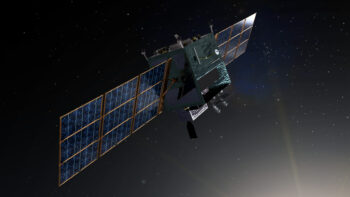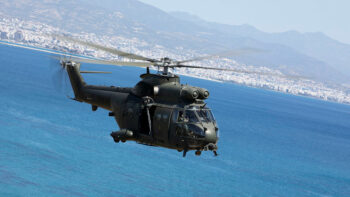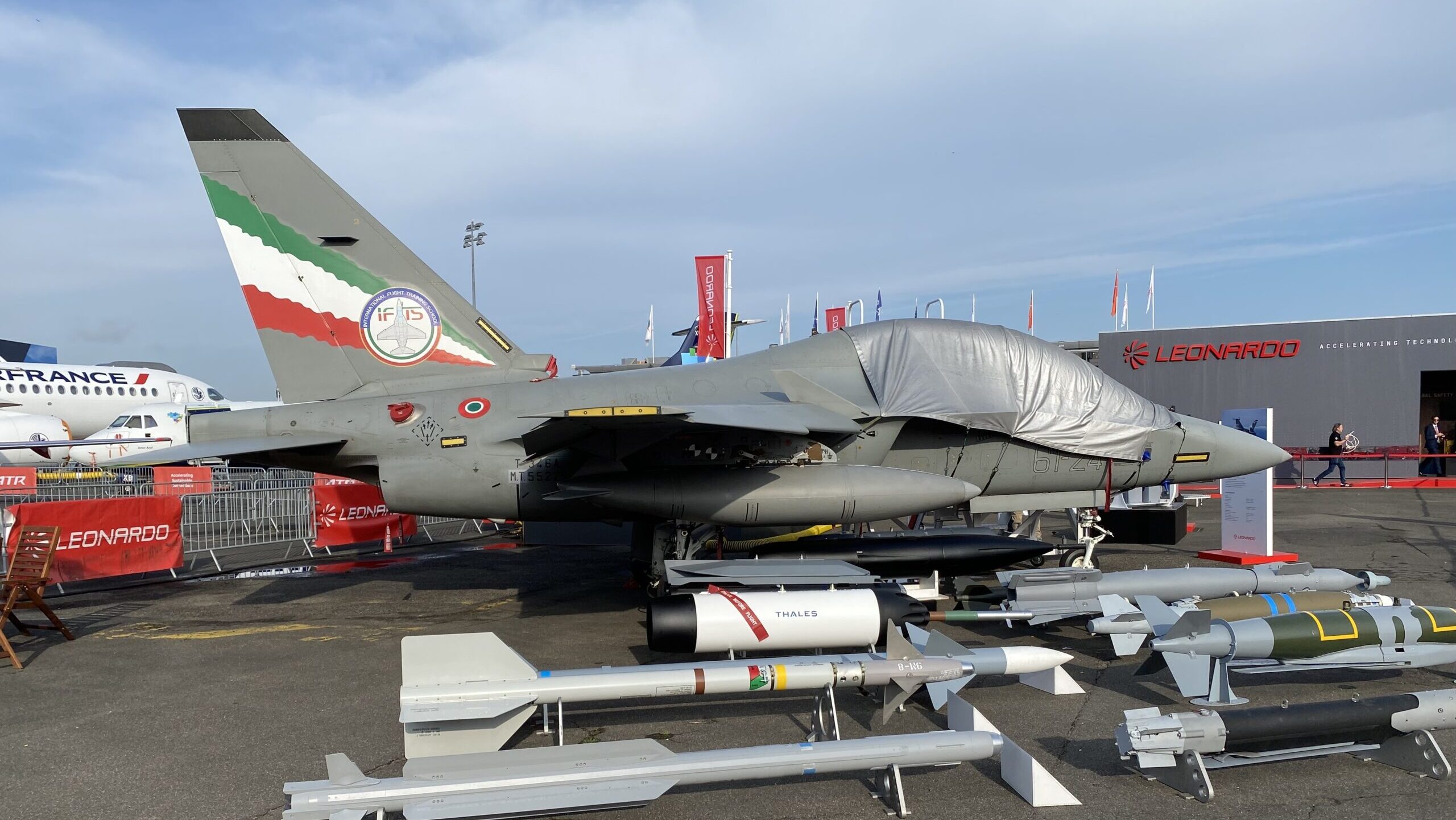
The M-346, produced by Leonardo, showed off some of its weapons options at the 2023 Paris Air Show. (Aaron Mehta/Breaking Defense)
WASHINGTON — Executives from Textron and Leonardo are hopeful that the real-world experience of the Italian firm’s M-346 aircraft will help them land the right to supply the US Navy with its next-gen trainer, executives told Breaking Defense in a recent interview.
The two announced in September that they would go after the upcoming training program, which would likely put them up against Boeing’s T-7A and the Lockheed Martin-KAI T-50.
In its effort to replace the aging T-45 trainers, the Navy put out a Request for Information last August for what’s officially dubbed the “Undergraduate Jet Training System (UJTS).” It indicated a minimum buy of 145 aircraft and a contract award in 2026. That means a Request for Proposal could drop by the end of this year or early 2025, which would see the contest officially kick off.
A big part of the Textron-Leonardo team’s pitch is that the M346 isn’t just a jet, but is tied into a whole training enterprise that is already in use on a global scale, including international F-35 pilot training. Italy, Poland, Singapore, Israel, Greece and Qatar are all M-346 operators — and all but Qatar are either current or planned operators of the F-35 Joint Strike Fighter.
“It’s not just the airplane, it’s a pull-up simulation system. It’s developed courseware. It’s a way of teaching that’s already been validated for countries that are flying the F-35 today,” Thomas Webster, Textron Aviation Defense’s vice president of global sales and strategy, told Breaking Defense during last week’s Sea Air Space symposium. “The strength we think we bring is that they’re going to go from contract to actually starting to turn out students much quicker than any other competitors.”
In particular, Webster and a set of executives from Leonardo emphasized the benefits of the International Flight Training School, a joint project between the Italian military and Leonardo, located in Decimomannu, Italy. Training at that facility is based around the M346, and a number of current or future F-35 operators — including Japan, Germany, Singapore, Austria, Canada, and the United Kingdom — have announced plans to take part in the school.
While cautioning that the final RFP from the Navy isn’t out yet, Webster said there should only be “minor tweaks” needed to turn the M346 into what the companies are pitching as the “M346-N.”
For instance, the M346 is capable of doing Field Carrier Landing Practice — basically, touch-and-go operations on land that are supposed to simulate landing on a carrier — now. But the recent Navy RFI said the jet needs to be able to perform 35,000 such exercises over the life of the plane, which may require tightening up of the plane’s landing gear.
Then there’s updating software to match the Navy’s most recent version of its Precision Landing Mode system for carrier landings. However, until final requirements are written, it remains to be seen exactly what the industry team would need to do.
The US Air Force in 2017 selected the Boeing-Saab T-7A as its next-gen training aircraft over, among others, the M346. In theory, it would make sense for the two American services to have a common trainer, given they both operate variants of the F-35 and having one training fleet would bring overall costs down.
Webster dismissed the idea that Boeing’s Air Force win puts his team behind the ball in the Navy competition, in part due to the issues Boeing has had with getting the T-7A underway. “If the Navy reads the newspaper, the media, I’m not unduly concerned,” he said with a laugh, before arguing that if the Navy joined up with T-7A it would be years down the line before its jets can start delivering. (In a recent Breaking Defense report, a Boeing spokesperson acknowledged some “challenges” with T-7A deliveries, but said progress was being made.)
David Kindley, Leonardo US’s director for trainers, airlifters and special mission campaigns, added that the Navy would see benefits by having a singular, dedicated industry partner.
“One of our respectful arguments back to the Navy is, you tried running second place to the Air Force before with F-35, how’d that work out for you? You’re number one with us,” Kindley said. “You are the biggest thing in our in our portfolio. You call our president, you get the president.”
In November, a US Air Force official revealed that the service was considering a way to turn the T-7A into an attack variant. While the M346 has a history of being configured as a light-attack platform, the executives said the question of whether the trainer could also fill that mission has not come up in discussion with Navy officials.
Top of Marines’ wish list: More capable drones, and ways to kill them
“What’s the future in your space?” Gregg Skinner, program manager for Navy and Marine Corps small tactical uncrewed aerial systems (UAS), asked a mixed audience of military and industry. “Group 5 capability, in a Group 2 [drone], at a Group 1 price.”

















